Even if you’re not an expert SEO, you know how important backlinks are.
They’re the meat and potatoes of any SEO strategy.
And believe it or not, there are hundreds of link opportunities out there waiting for you.
You don’t have to be a superhero to find them. There are no special skills required. You just need some time.
Here’s the thing: There are tons of sites out there that desperately want to give out backlinks.
The problem? There’s a severe shortage of high-quality sites to give links to.
I know from experience. I get dozens of backlink requests each week, but most of the sites don’t match my quality standards.
Believe me, I love giving out links. But I don’t give them out to everyone. A site has to be exceptional to earn a link.
That’s where you come in.
If you consistently put in the effort to create an authority site, you’ll get links. It’s as simple as that.
You’re probably wondering: “Where do I find all of these links?”
I’ve written several articles on this topic, but sometimes you need the CliffsNotes.
That’s why I’m going to show you how to find a whopping 50 link opportunities in 20 minutes or less.
These are super actionable strategies, and they’re the ones I’ve found to be extra effective for link building.
Find the authority sites in your niche (5 minutes)
“Authority” is somewhat of a buzzword these days, but it still holds a lot of power.
If you’re looking to make a splash and drive serious traffic, you need to aim to get links from the big sites in your niche.
That’s why I recommend starting out by looking at authority sites.
You know, one thing I see wrong with a lot of link strategies is a lack of ambition.
Many people act like getting a link from an authority site is like getting an interview with a celebrity. They think it could never happen in a million years.
But I have good news: That’s not the case at all.
Just because a site is well known doesn’t mean it’s reluctant to hand out links to the little guys. In fact, it happens all the time.
You don’t need to have thousands or even hundreds of readers to land a link. All you need is an awesome resource.
That said, start by making a list of the authority sites in your niche.
I like using Ubersuggest for this. Here’s how I do it:
Step #1: Enter a keyword related to your niche and click “Search”

Step #2: Click “Content Ideas”
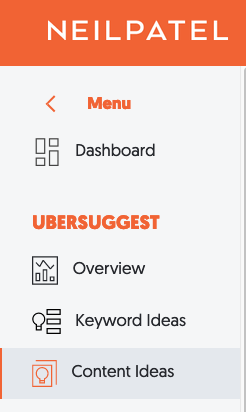
Step #3: Analyze the results
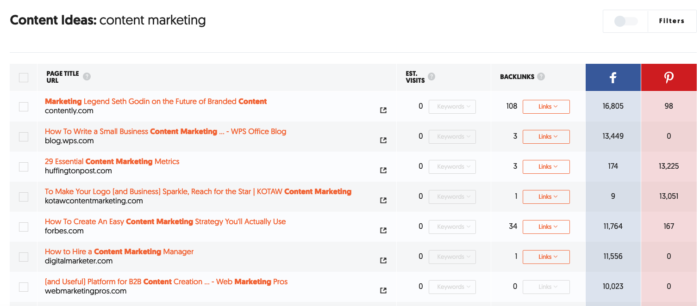
Your goal is to make a list of authority sites in your niche, and you’ll find that in the “Page Title/URL” column. Other columns include data for:
- The estimated traffic the webpage gets for the keyword
- The number of backlinks to the URL
- The number of social media shares on Facebook and Pinterest
This is all you need to do to create a list of 50+ authority sites in your niche. If you spend five minutes doing this, you’ll be happy with the list you end up with.
Check out existing links (5 minutes)
The #1 best way to get a link from a site is to find out what kinds of links are already on the site.
If your content matches what a site is linking to, you have an excellent chance of getting a link yourself.
But if your content is very different, you’ll probably need to look elsewhere.
Finding outbound links and visiting those links gives you a solid idea of what a site is looking for.
There’s no one right way to do this. I like to take a look at the last 5 or so articles and check out the links.
Don’t just peek at the linked domains. Really analyze the links and the type of content they have.
Keep in mind that a site may not have any outbound links. This Copyblogger post has only one:

And this SaaStr post has none:
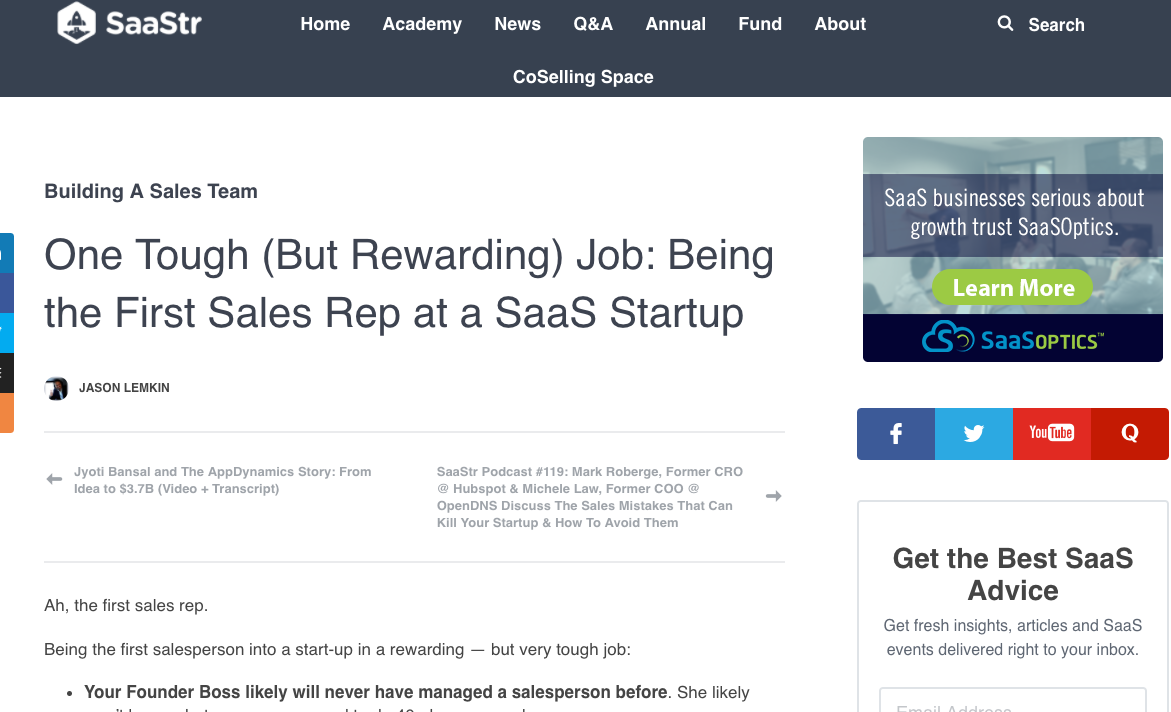
In these cases, it’s going to be difficult to land a backlink.
I hate to be the bearer of bad news, but it’s the truth. Not every site you’ll find will be an opportunity to grab links.
That said, for every site that doesn’t have many links, there are 5 more that are backlink hotspots.
So let’s look at a site that does have several outbound links. Take this Backlinko post:

There are a few types of links in this article.
There’s a link to a HubSpot post that gave Brian an idea:

There’s a link to a study on clickthrough rates:
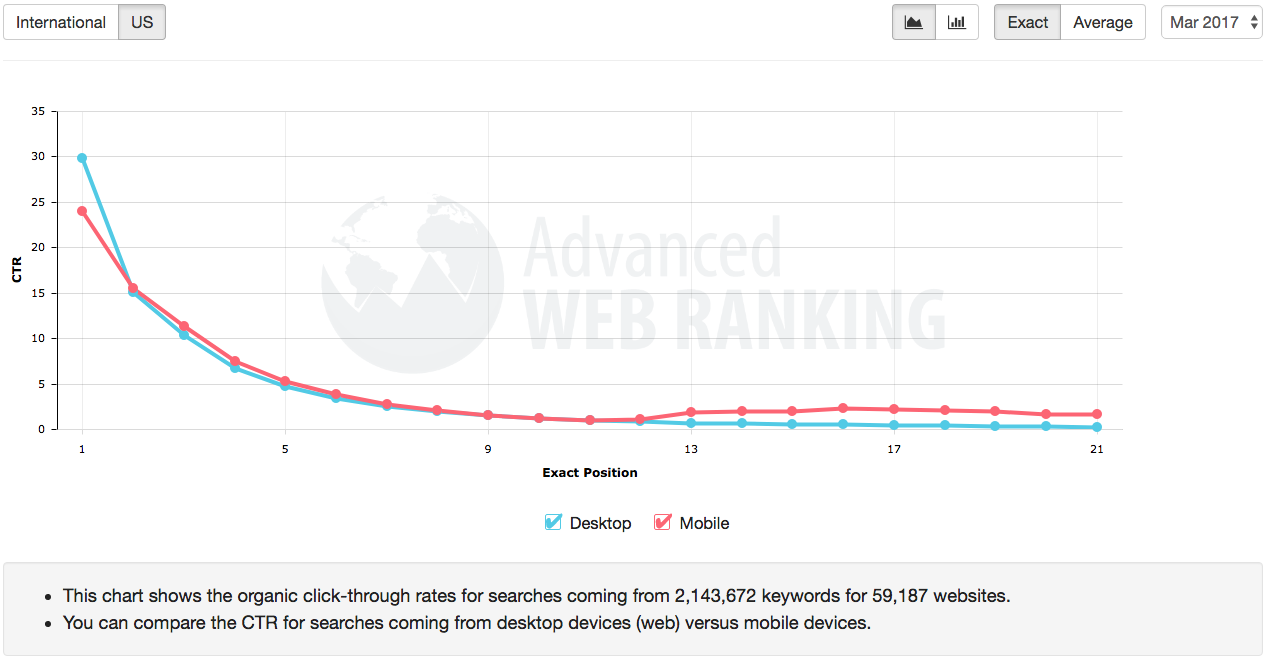
Finally, there’s a link to Google Search Console:

There are only two more links, and they’re both Backlinko posts.
Here’s where you have to do some critical thinking. Brian’s post clocks in at over 1,500 words.
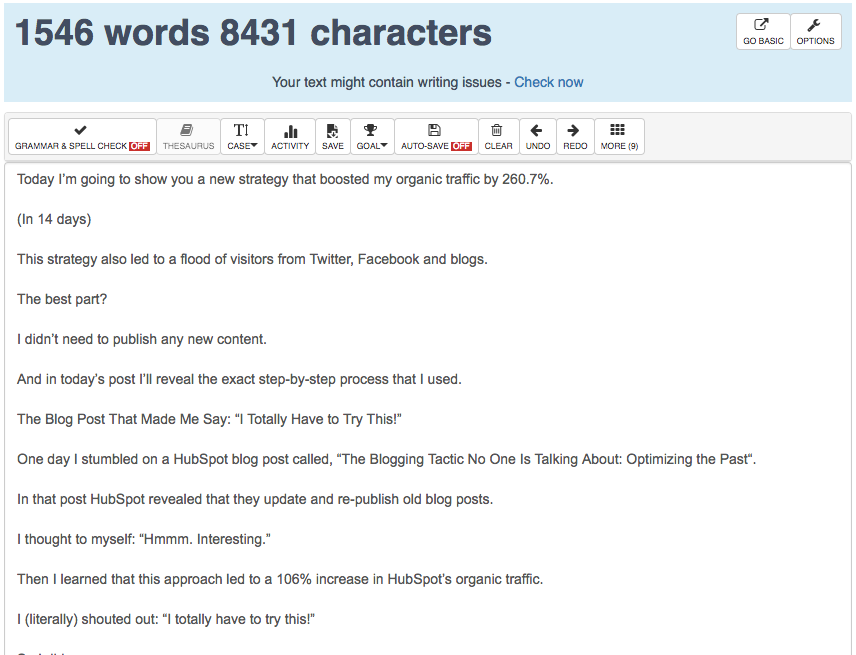
And there’s a total of three outbound links.
This tells you that Brian probably only links to sources that are incredibly relevant and data-rich.
If you check out some of Brian’s other articles (like this and this), you can confirm that theory.
Particularly, he links to studies a lot.
So what does this mean for you? It means your content will have to be extremely related to what Brian’s posting about.
And if you’ve published a legitimate study, you’re extra likely to get a link if you ask for it. (More on asking in a little bit.)
That’s why you need to study links.
For this step, use a link audit tool like Ubersuggest to find the outbound links on any website or webpage you find.
Start by typing your URL into the search bar.

The goal is to find out exactly what kinds of links each site has, so the next step is to click on “Backlinks” in the left sidebar.

Finally, scroll to the bottom of the results page for a list of every link.
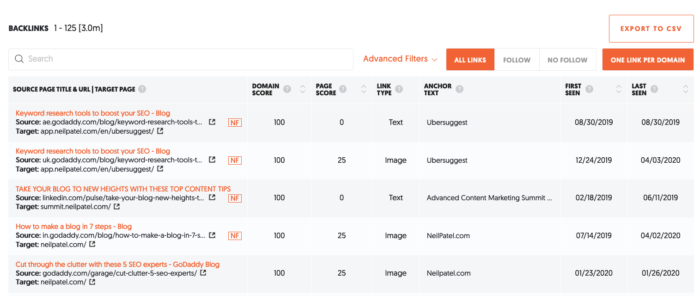
Then ask yourself if your content is similar. If so, that’s a link opportunity for you.
Overall, you should spend about 5 minutes during your 20 minute period on this task.
Check for broken links (3 minutes)
You’ve probably seen this strategy over and over again, but there’s a good reason: It works.
It’s like the old saying: “If it ain’t broke, don’t fix it.”
It’s one of my all time favorite techniques for getting links.
Sites always appreciate when you notify them of a link that doesn’t work anymore. And they’re almost always willing to give you a link to return the favor.
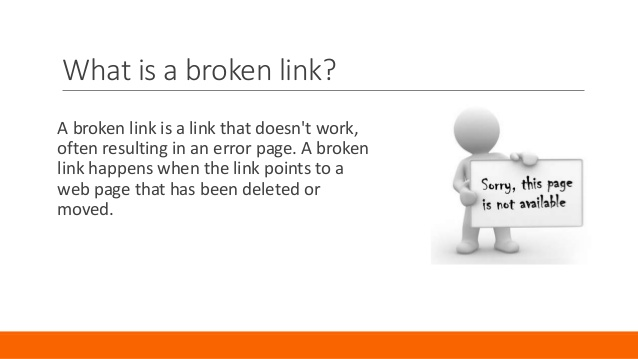
You’d be amazed at how effective this is, especially if you haven’t tried it. Simply letting a site know about a dead link and offering your link can be powerful.
Brian Dean calls it the Moving Man Method. No matter what you call it, it’s almost every SEO’s go-to link building strategy.
Find influencers in your niche (3 minutes)
This is similar to finding authority sites in your niche, but it’s also very different.
Often, reaching out to influencers directly is more effective than contacting them through their site.
There are also different kinds of ways you can approach this. I’ll give you two, but to keep everything within the 20-minute time limit, pick just one.
Option #1: Using Twitter suggestions. Twitter is a great tool for networking. In fact, I think it’s the most powerful.
Why? It’s a snap to follow someone on Twitter or retweet something.
Twitter requires little to no effort, and I’ve found that influencers are more willing to share content on Twitter than on any other social media platform.
But Twitter is also handy for discovering new influencers. The power lies in the “You may also like section.”

This is a dead easy way of finding new people to reach out to. It also takes almost no time.
Here’s how it works. Let’s say you know an influencer in your niche. I’ll use Jay Baer of Convince and Convert.
Let’s visit Jay’s Twitter and look on the right side at the “You may also like” section:
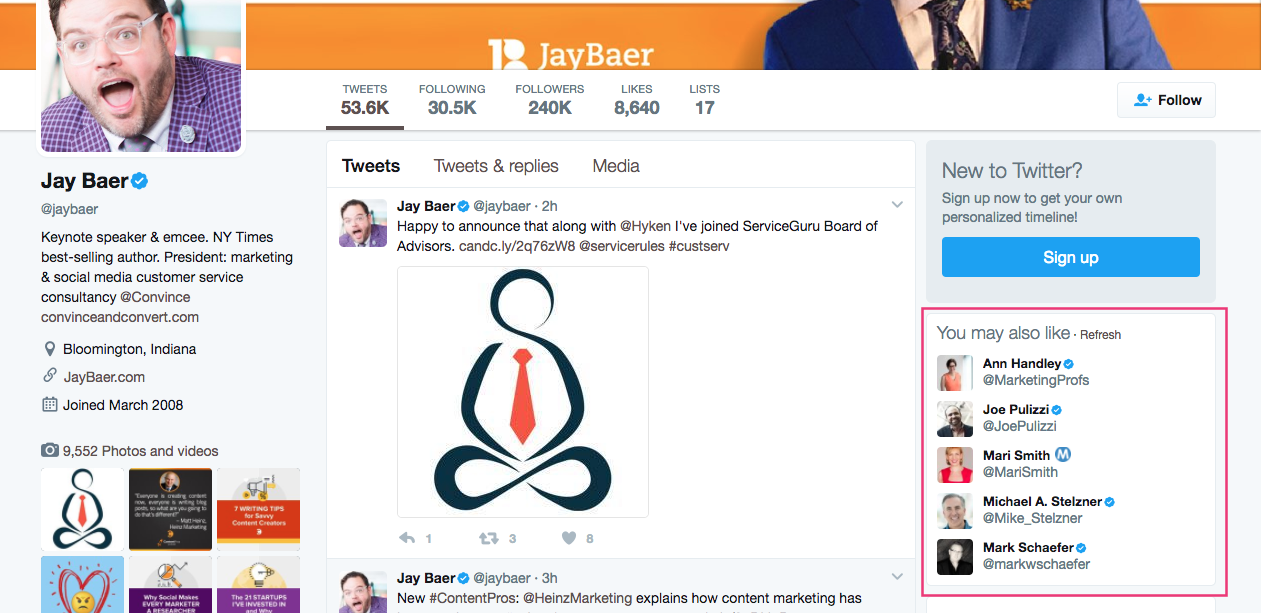
These are all people that Jay is associated with or people who are in similar niches.
Often, these recommendations are really accurate. Twitter makes these recommendations using an algorithm that take several factors into account:

These aren’t always relevant, but I’ve found that about 80% of the time, they’re extremely relevant.
So find the Twitter profile of an influencer in your niche and write down the names of everyone in the “You may also like” box.
See a company? That’s good too.
But wait a second––it gets even better.
See the small “Refresh” text at the top right of the box?

That will give you more suggestions:
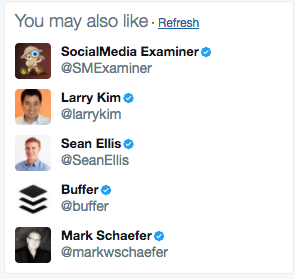
And you can keep clicking and clicking without getting many repeats.
You can record all of these suggestions in your spreadsheet.
In fact, if you really wanted, you could get 50 backlink opportunities just by finding 50 different people from this technique!
I like to change it up, but if this works for you, go for it.
You could also write down 5-10 suggestions for one influencer and then visit another influencer’s Twitter. That way, you could get a variety of different people and businesses.
That’s the approach I recommend, but you can do whatever works for you.
If you’re new to finding link opportunities, I recommend using Twitter. It’s simpler and more direct than the other two options I’m about to share with you.
Option #2: Using LinkedIn suggestions.
LinkedIn gets a lot of flak for being boring, but it can come in handy quite often.
It’s another good option for finding influencers to connect with.
Head to your LinkedIn homepage and look on the right side. There will be a box that says “Who to follow.”

This is extremely similar to Twitter’s “You may also like” feature. It shows you influencers in niches you’re associated with.
So if your connections are mostly in marketing, you’ll see a lot of suggestions for marketing influencers.
LinkedIn’s algorithms are a bit more general than Twitter’s. In other words, you may not get influencers from a single niche.
But there’s a way around this, and it’s one of LinkedIn’s secret gold mines.
At the bottom of the “Who to follow” box, click “View all recommendations.”
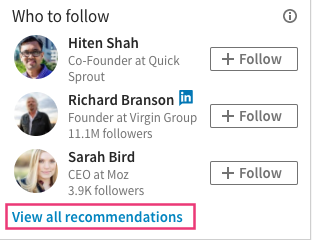
You’ll now see influencers categorized into niches like marketing and career development. There are pages and pages for you to comb through:

In my opinion, this is a lot better and more convenient than the small “Who to follow” box. You can zero in on a certain niche and find people and businesses to contact for backlinks.
If that’s not enough, click “See more” at the bottom of each row to view more suggestions:

Again, write down the names of the influencers you see.
You’ll get a lot of names with LinkedIn, but it’s not always the most targeted. Twitter’s recommendations are based on the current profile, whereas LinkedIn’s suggestions are more general.
So if you want dynamic suggestions, use Twitter. The “You may also like” box will change depending on whose profile you’re on, so the suggestions are usually more accurate.
But if you’re after lots of people to contact and don’t care as much about relevant suggestions, use LinkedIn.
Leverage existing backlinks (4 minutes)
For some reason, whenever I see articles about backlinks, they’re all about finding new ways to get backlinks.
But if you’re already getting links, why not take advantage of that?
If a site has linked to you in the past, it’s likely that you can get more links from that site.
The best way to find out what sites have given you links is to perform a link audit.
If you don’t have time, you can use Google Search Console to find your links.
First, enter Google Search Console by clicking “Sign in” at the top right.
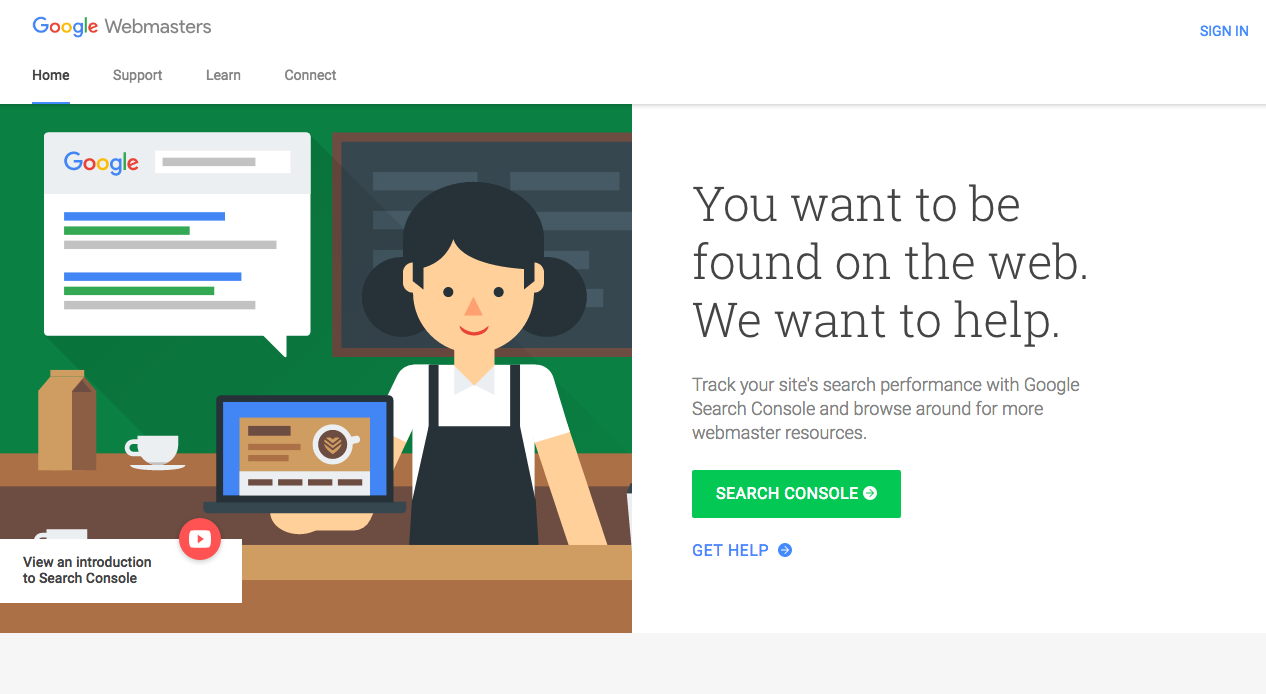
Next, click “Search Traffic” in the sidebar.

Then click “Links To Your Site.”
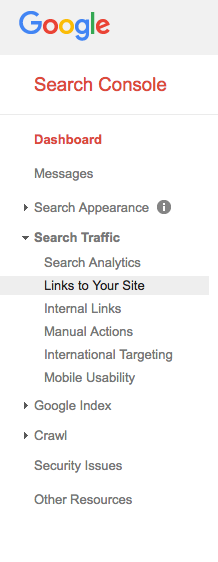
Now you’ll be able to see all the backlinks that point to your site.
In your spreadsheet, write down the URLs for sites that have given you links. These are all ripe opportunities for you to get new links.
Conclusion
There you go––my method for finding countless link opportunities in 20 minutes flat.
If you get good at this, you can do it even faster.
It’s easy to average 50 opportunities each time you use strategy.
Of course, once you have those opportunities, that’s not the end of the story. You have to take action and get those links.
Often, I’ve found that the hardest part of a link building strategy is simply finding where all the good links are. That’s why I’ve done the hard work for you.
The tips I’ve shared with you are powerful on their own.
But the real power lies in repeating this strategy.
Just doing this once in blue moon won’t get you the results you’re looking for. Try doing it a couple of times a week.
And if you have more than 20 minutes, that’s obviously great, and you should take advantage of it.
But I wanted to show you that even if you only have 20 minutes, you can still find tons of link opportunities.

